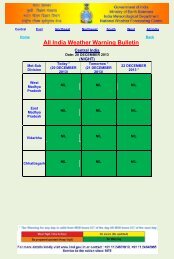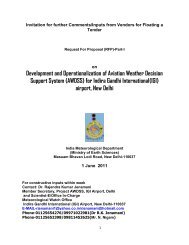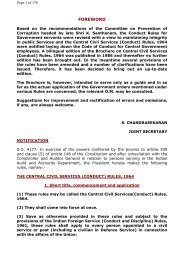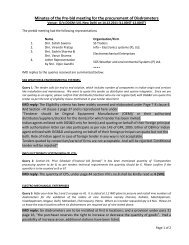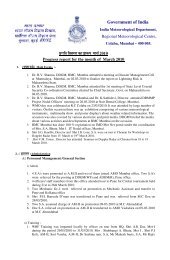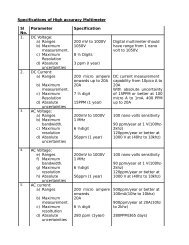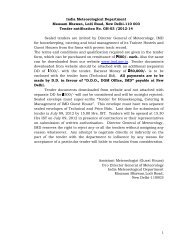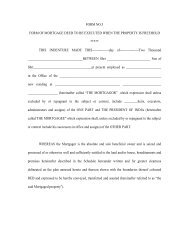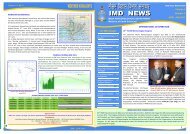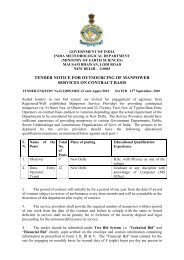Doppler Weather Radar - METNET - India Meteorological Department
Doppler Weather Radar - METNET - India Meteorological Department
Doppler Weather Radar - METNET - India Meteorological Department
You also want an ePaper? Increase the reach of your titles
YUMPU automatically turns print PDFs into web optimized ePapers that Google loves.
IRIS/Display Installed at remote workstations, the IRIS/Display system receives processed<br />
product files or raw data over the network or from an archive, and uses them for display<br />
purposes. It supports the basic product set. Remote control and monitoring are also supported.<br />
A.3. Base Products received from <strong>Doppler</strong> <strong>Weather</strong> <strong>Radar</strong>s<br />
A.3.1. Reflectivity factor (Z)<br />
This is the integral over the backscatter cross-section of the particles in a pulse volume. As per<br />
the empirical relation, the reflectivity for the particles those are small as compared to the<br />
wavelength the scatter cross-section will be D6, where D is the diameter of the particle. <strong>Radar</strong>s<br />
are calibrated in the way to give directly (assuming the dielectric constant of water) the<br />
reflectivity factor from the received backscattered energy. The units for the reflectivity factor are<br />
mm6 m-3 or in the logarithmic value it is denoted in dBZ, as indicated in the color scale in<br />
following Figure A.5<br />
Figure A.5. Reflectivity factor (Z)<br />
A.3.2. <strong>Doppler</strong> velocity (V)<br />
<strong>Doppler</strong> velocity is reflectivity-weighted average velocity of targets in the pulse volume and<br />
determined by phase measurements from a large number of successive pulses. This is also called<br />
radial velocity and gives only the radial component of the velocity vector. It is generally assumed<br />
that raindrops and other particles are advected with the wind and have no own motion except<br />
their falling velocity. A PPI picture of radial velocity is shown below in Figure A.6.<br />
57



